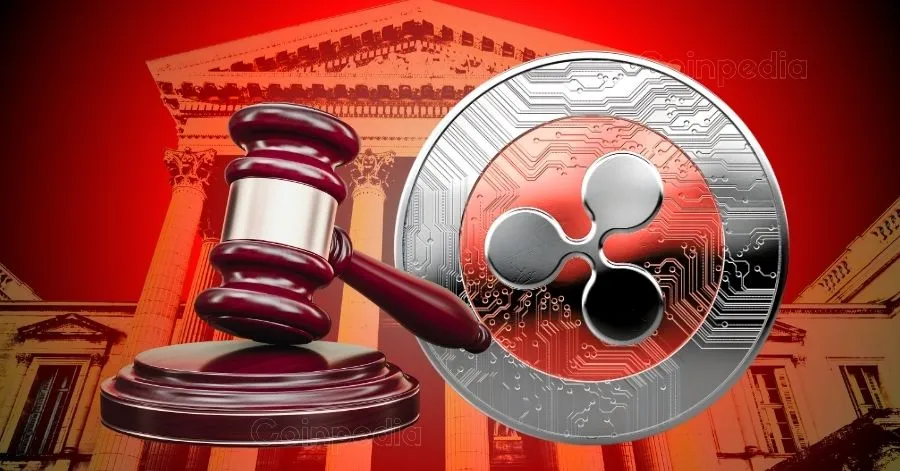The recent developments in the Ripple versus U.S. Securities and Exchange Commission (SEC) legal battle mark a pivotal moment not only for Ripple Labs and its XRP token but also for the broader landscape of cryptocurrency regulation in the United States. This report delves into the details of Ripple’s decision to drop its cross-appeal, the SEC’s anticipated withdrawal of its appeal, and the consequential impacts on the crypto industry moving forward.
Background of the Ripple vs. SEC Lawsuit
Ripple Labs has been embroiled in a protracted lawsuit with the SEC that began several years ago, centering on whether XRP, Ripple’s digital token, qualifies as a security under U.S. law. The SEC alleged that Ripple’s sale of XRP constituted an unregistered securities offering, a case that carried immense regulatory and financial consequences. Ripple denied these allegations, asserting XRP’s status as a currency rather than a security, thereby seeking to protect the interests of its investors and the broader crypto market.
Over the years, this legal battle has undergone numerous hearings, rulings, and appeals, significantly impacting XRP’s market performance and casting uncertainty over the regulatory treatment of cryptocurrency assets in the United States. The lawsuit has been a focal point for the crypto community, with many stakeholders closely watching the outcome for its potential to set precedents for how digital assets are regulated.
Ripple’s Drop of Cross-Appeal and SEC’s Likely Withdrawal
In March 2025, Ripple officially announced it was dropping its cross-appeal against the SEC. This move was shortly followed by indications that the SEC would reciprocate by dropping its own ongoing appeal. The cessation of appeals from both parties signals the closure of what has been an exhaustive four-year legal contest.
This decision comes after a partial court ruling favored Ripple by indicating that XRP sales via exchanges were not securities transactions, but also left some restrictions intact regarding institutional sales. Ripple’s cross-appeal was originally intended to challenge certain aspects of the judge’s ruling that constrained XRP’s usage and sales, so dropping this appeal indicates a strategic decision to settle the dispute and focus on future growth.
Additionally, Ripple agreed to pay $50 million out of a previously imposed $125 million penalty. The settlement includes the SEC retaining this amount while the remainder would be returned to Ripple, effectively resolving financial liabilities related to the case. This settlement not only provides financial closure but also sets a precedent for how future disputes between crypto companies and regulators might be resolved.
Implications for XRP and Its Market Value
The end of this lawsuit is widely anticipated to give XRP’s market a substantial boost. The drawn-out legal uncertainty severely constrained XRP’s adoption and liquidity, especially among institutional investors wary of regulatory risks. With the closure of the legal dispute, exchanges are free to resume normal trading of XRP without fear of regulatory repercussions.
XRP’s price rally following these announcements underscores market optimism. The ability to settle transactions and raise capital more freely now positions XRP to reclaim prominence among the world’s leading cryptocurrencies. The resolution of the lawsuit also opens the door for new partnerships and collaborations, further enhancing XRP’s utility and value in the global market.
Broader Impact on Cryptocurrency Regulation and Industry Confidence
This settlement between Ripple and the SEC may signal a broader shift in how U.S. regulatory authorities approach cryptocurrencies. The SEC’s willingness to drop its appeal and settle terms with Ripple reflects growing recognition within some regulatory circles that existing securities laws may not be fully equipped to address the unique nature of digital assets like XRP.
The conclusion of this long-running dispute could catalyze more nuanced regulatory frameworks, balancing investor protections with innovation and market growth. This is particularly important as legislative and regulatory bodies become more informed about blockchain technologies and their diverse use cases.
Such a development is likely to enhance confidence among crypto businesses and investors, encouraging innovation while clarifying legal boundaries. This case sets a precedent that may influence future regulatory actions and the classification of various digital assets. The resolution of the Ripple vs. SEC lawsuit could pave the way for more constructive dialogues between regulators and crypto companies, fostering a more stable and predictable regulatory environment.
Ripple’s Strategic Position Post-Lawsuit
With legal overhangs removed, Ripple is poised to strengthen its market strategy, expanding partnerships and deepening its foothold in cross-border payment solutions. The ruling preserves Ripple’s ability to operate in the U.S. and potentially tap into the growing demand for blockchain-based financial services.
By resolving this dispute, Ripple also sends a message to other crypto enterprises about the possibility of navigating regulatory challenges through constructive engagement and legal resolution. This strategic positioning could attract new investors and partners, further solidifying Ripple’s role in the crypto ecosystem.
Conclusion
The termination of the Ripple vs. SEC lawsuit concludes a significant chapter fraught with uncertainty and industry-wide ramifications. Ripple’s decision to drop its cross-appeal and the SEC’s anticipated dismissal of its appeal bring closure to one of the most closely watched legal disputes in the crypto world. This resolution not only boosts XRP’s prospects but also marks a potentially transformative moment for the U.S. regulatory landscape’s approach to cryptocurrencies.
By moving past litigation, Ripple and the SEC illustrate a pragmatic path forward—one that may foster clearer rules, greater market stability, and renewed innovation in the digital asset sector. For investors, developers, and policymakers alike, this turning point represents an opportunity to rethink how emerging technologies and regulatory frameworks can co-evolve to shape the future of finance. The resolution of this case sets a positive precedent for the crypto industry, highlighting the importance of collaboration and adaptability in navigating the complex regulatory landscape.











